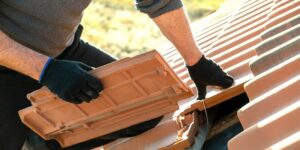Your roof is your home’s first line of defense against the elements. Keeping it in excellent condition not only enhances durability but also ensures your home remains protected from weather extremes. A well-maintained roof can save you thousands of dollars in repairs and replacements over time. Identifying the key features of durable roofs is essential for choosing a design that offers longevity and reliable protection. Below are practical and effective tips to maintain your roof’s integrity all year long.
1. Understanding Your Roof’s Needs
Before diving into maintenance, it’s essential to know your roof type and its specific requirements. Asphalt shingles, metal roofing, clay tiles, or flat roofs each have unique characteristics and care needs.
Inspect Regularly, Act Promptly
- Inspect your roof at least twice a year, ideally during spring and fall.
- Look for signs of damage like loose shingles, cracks, or sagging areas.
- Address minor issues promptly to prevent them from escalating into major problems.
Fun Fact: Did you know that asphalt shingles are the most common roofing material in the U.S., covering over 75% of homes?
2. Clean Your Roof with Care
Keeping your roof clean isn’t just about aesthetics. Dirt, moss, and debris can cause significant damage over time.
Gentle Cleaning Tips
- Use a soft-bristle broom or a garden hose to clear debris. Avoid pressure washing as it can strip protective layers.
- Remove moss and algae using a mixture of water and bleach (50/50 ratio). Always rinse thoroughly to avoid staining.
Pro Tip: Install zinc or copper strips along the roof ridge to prevent moss and algae growth naturally.
3. Prioritize Gutter Maintenance

Clogged gutters can lead to water pooling on your roof, causing leaks and structural damage.
Gutter Cleaning Checklist
- Clear out leaves and debris from gutters at least twice a year.
- Ensure downspouts are directing water at least three feet away from your home’s foundation.
- Consider installing gutter guards to minimize debris buildup.
Fun Fact: During heavy rainfall, a 1,000-square-foot roof sheds approximately 600 gallons of water. Proper gutters are essential for managing that flow!
4. Check for Weather Damage After Storms
Storms can wreak havoc on your roof, so post-storm inspections are crucial for spotting potential problems and fixing a damaged roof promptly can prevent further structural issues and protect your home from costly repairs.
Signs of Storm Damage
- Missing or curled shingles
- Dents or cracks caused by hail
- Water stains on your ceiling, indicating leaks
After severe weather, always have a professional evaluate your roof to ensure there are no hidden damages.
5. Trim Overhanging Branches
Trees provide shade but can also pose a risk to your roof. Overhanging branches can scrape your roof or break during storms, causing damage.
How to Safely Trim Branches
- Maintain a safe distance of at least six feet between tree branches and your roof.
- Use proper tools or hire a professional arborist for larger trees.
Fun Fact: Trees close to your home can improve energy efficiency by up to 25%, but only when properly maintained!
6. Invest in Proper Insulation and Ventilation

A well-ventilated and insulated attic can prevent issues like ice dams and excess moisture.
Why It Matters
- Insulation keeps your home warm in winter and cool in summer, reducing energy costs.
- Ventilation allows moisture to escape, preventing mold and rot in the attic.
Pro Tip: Consider installing a ridge vent to improve airflow throughout your roof.
7. Schedule Professional Inspections
While DIY inspections and maintenance are helpful, professional evaluations provide peace of mind and uncover issues you might miss.
When to Call a Pro
- If you notice persistent leaks or sagging areas
- Before and after extreme weather seasons
- During a home sale or major renovations
Fun Fact: Regular roof inspections can extend the lifespan of your roof by up to 30%!
8. Plan for Seasonal Challenges
Each season presents unique challenges to your roof. Preparing for these can help maintain its durability year-round.
Spring and Summer
- Inspect for damage caused by winter snow and ice.
- Ensure proper drainage during heavy summer rains.
Fall and Winter
- Clear leaves from gutters to prepare for snow and ice.
- Use a roof rake to remove heavy snow and prevent ice dams.
Pro Tip: Avoid using salt to melt ice on your roof – it can corrode materials and damage shingles.
9. Choose Quality Materials for Repairs
When repairs or replacements are needed, always prioritize high-quality materials.
Why Quality Matters
- Durable materials withstand harsh weather conditions better.
- High-quality options like metal roofing or architectural shingles add value to your home.
Investing in quality materials today saves you money and stress in the long run.
10. Stay Ahead with a Roof Maintenance Plan

A proactive approach to roof maintenance can save you time, money, and headaches.
Build a Maintenance Schedule
- Set reminders for regular inspections and cleanings.
- Budget for annual upkeep to avoid surprise costs.
Fun Fact: Some homeowner insurance policies offer discounts for proactive roof maintenance. Check with your provider!
Your roof does more than just shelter your home – it protects your family, belongings, and investment. By incorporating these practical maintenance tips into your routine, you can ensure your roof stays durable and weather-resistant for years to come.
Make roof care a priority, and you’ll enjoy peace of mind no matter the season!
Also Read: Is It Time for a Home Refresh? Updating Your Garage Door and Exterior Look.
